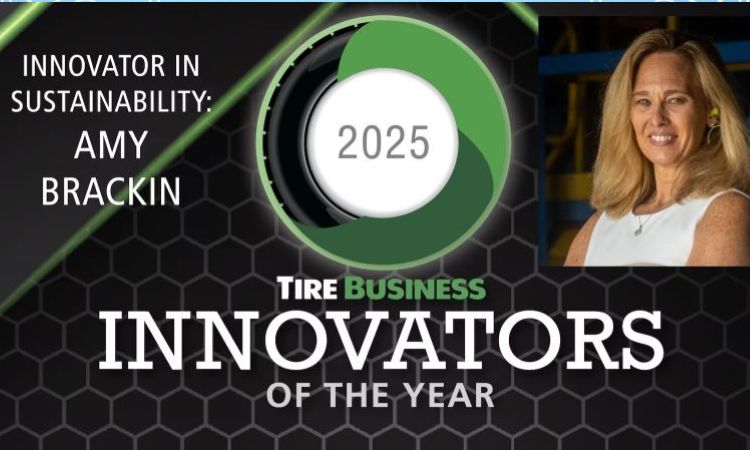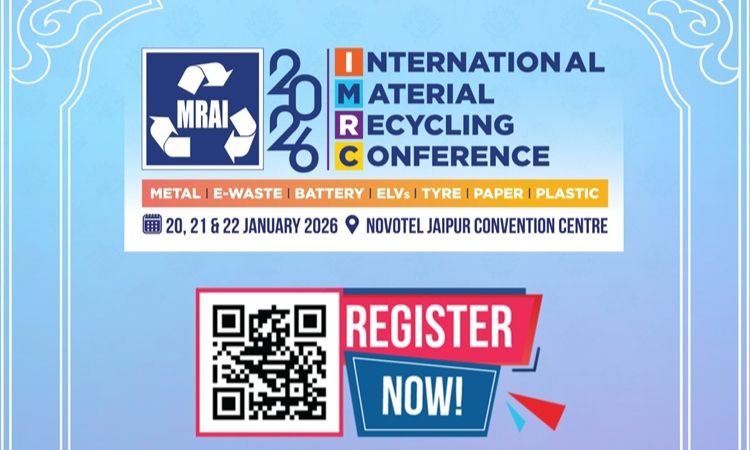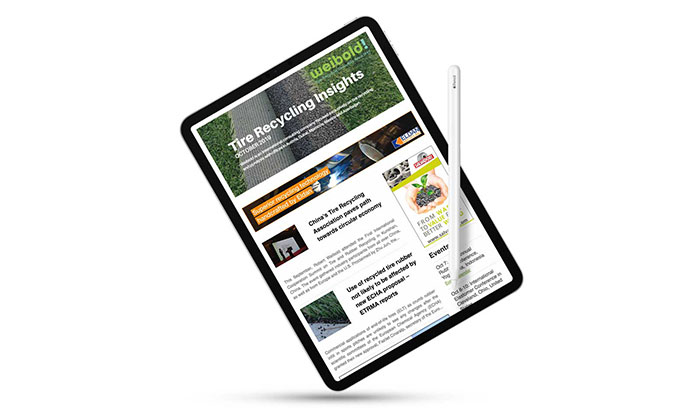Weibold Academy: Life cycle assessment in the tire recycling and pyrolysis industry
Every month, our Weibold Academy series touches different topics from the world of tire recycling and highlights different sides of running this business. This month, our article highlights benefits and challenges of performing LCAs in the context of tire recycling and pyrolysis.
As a specialized consulting company, Weibold is competent in carrying out Life Cycle Assessment for circular economy concepts involving end-of-life tire recycling and pyrolysis products. Read our article below and submit your request at sales@weibold.com to inquire about our services.
Synopsis
Regardless of meandering political environmental protection trends, most Western companies today are embracing Corporate Environmental Responsibility (CER) as a mandate that is integral to their corporate strategy and forms part of their Corporate Social Responsibility (CSR) program. The automobile industry and its subset, the tire industry, is no exception. Consumer awareness represents pressure on corporate governance to continuously improve the environmental footprint throughout the life cycle of their products. Life Cycle Assessments (LCAs) are one way of objectively quantifying and qualifying the effect that material and energy flows of a given product have on our environment, our health, our economies, and the way we live. LCAs also help design the products we and our customers manufacture, compare them to competitive solutions, and enhance their perception in the market. If performed properly, the investments that LCAs require can therefore ultimately translate into improved profit margins. This article examines the difficulties we encounter and gains we can realize when performing an LCA on an End Of Life Tire (ELT) derived product.
Why do an LCA?
Globally, approximately 1 billion tires are discarded annually. The largest contributors are from the United States and the European Union, producing about 300 and 260 million tires, respectively. Material recovery routes include recycling, pyrolysis, reuse, retreading, regeneration, and co-processing. From a circular economy standpoint, the tire manufacturing and recycling industrial complex is far ahead of those of other products. But our understanding of the beneficial impact the ELT recycling industry (and particularly the emerging pyrolysis sector with its more sophisticated product output) has on the many environmental categories is still in its infancy. Better understanding the effect our choices of raw materials and processing techniques have on the entire value chain from mining to waste disposal (“cradle-to-grave”) will allow us to make sound decisions and thereby better protect our environment and health, improve the corporate image, create a higher value product, and, ultimately, improve our profit margins.
Life Cycle Assessment has been established over decades as a critical tool for the evaluation of the environmental burdens of chemical processes and materials cycles. The increasing amount of solid waste from tires and plastics in landfills has raised serious concern worldwide for the most effective treatment. Thermochemical post-treatment processes, such as pyrolysis, seem to be the most appropriate method to treat this type of waste in an effective manner. This is because such processes lead to the production of useful chemicals, or hydrocarbon oil of high calorific value. LCA appears to be the most appropriate tool for the process design from an environmental context.
Guiding LCA standards
To make LCAs as objective as possible, LCA studies are guided by standards drafted by the International Organization for Standardization (ISO). ISO is an international standard-setting body composed of representatives from various national standards organizations. The relevant ISO standards for LCAs are:
- ISO 14040:2006, Environmental management — Life cycle assessment — Principles and Framework, and
- ISO 14044:2006, Environmental management — Life cycle assessment — Requirements and Guidelines
ISO 14040:2006 describes the principles and framework for life cycle assessment (LCA) including: definition of the goal and scope of the LCA, the life cycle inventory analysis (LCI) phase, the life cycle impact assessment (LCIA) phase, the life cycle interpretation phase, reporting and critical review of the LCA, limitations of the LCA, the relationship between the LCA phases, and conditions for use of value choices and optional elements.
It covers life cycle assessment (LCA) studies and life cycle inventory (LCI) studies. It does not describe the LCA technique in detail, nor does it specify methodologies for the individual phases of the LCA.
The intended application of LCA or LCI results is considered during definition of the goal and scope, but the application itself is outside the scope of this International Standard.
ISO 14044:2006 specifies requirements and provides guidelines for life cycle assessment (LCA) including: definition of the goal and scope of the LCA, the life cycle inventory analysis (LCI) phase, the life cycle impact assessment (LCIA) phase, the life cycle interpretation phase, reporting and critical review of the LCA, limitations of the LCA, relationship between the LCA phases, and conditions for use of value choices and optional elements.
The European Commission is also conducting a Pilot Program to establish Product Environmental Footprint (PEF) Category Rules. To-date, Rules and Inventory Data have been established for a total of 19 Categories (such as beer, paint, IT equipment, etc). The program is expected to end in December 2020.
No rules for the category of Polymers (rubber and plastics) exist as yet.
Establishment of new PEF Category Rules (PEFCRs) is guided by the Product Environmental Footprint Category Rules Guidance, published by the European Commission in May 2018.
What does an LCA entail?
International standards call for LCA studies to be performed in standard phases:
| # | Phase | Work |
|---|---|---|
| 1 | Goal and Scope Definition | Define purpose, target audience, scope, functional units, unit processes, system boundaries, impact indicators (all ISO terms), flow map |
| 2 | Inventory Analysis (LCI) | Collect input/output data on all functional unit processes (energy, raw materials, ancillary inputs, other physical inputs); Calculate all flows |
| 3 | Impact Assessment (LCIA) | Assess results to understand environmental significance; associate inventory data with specified environmental impact indicators; May need to redefine Scope and Inventory Analysis (iterative!) |
| 4 | Interpretation | Review findings from Inventory Analysis and Impact Analysis; draw conclusions and make recommendations; write Report |
Source: ISO Standard 14040:2006.
The magnitude of the effort and the project duration greatly depend on the definition of the goals and scope of the study.
ISO standards have been drafted for a large spectrum of products, issues, and intended objectives. They leave the executive team with options for inclusion and exclusion dependent on intended use of the study reports.
LCAs employ a highly iterative process. For every LCA, trade-offs will have to be made between choice of applicable specifications, compliance to the specified standards, and level of effort (and therefore cost) for meeting the stated objectives of the study. Often, findings realized in Phase 3 will force re-definition or adjustment of the goals and scope established in Phase 1.
Major driving factors affecting the level of effort required to perform the LCA include:
- Whether or not the LCA Report is intended as a “Comparative Assertion for Public Disclosure” as defined in the ISO Standards. This has significant implications on the independent peer reviews and data quality analysis required for publication and on the complexity of the calculation techniques to be employed.
- The definition of the “System Boundary”, defined as set of criteria specifying which unit processes are part of a product system.
- The assumed “Cut-Off Criteria”, which specify of the amount of material or energy flow or the level of environmental significance associated with unit processes or product system to be excluded from a study.
- The number of Impact Category Indicators (“CI” for short) to be assessed in the report. These indicators can include such categories as climate change, water scarcity, acidification, human toxicity, health risks, mineral resource uses, CO2 emissions, ionizing radiation, marine eutrophication, and others.
The effort will in most cases first establish a Process Flow Diagram (PFD) which maps the Unit Processes cradle-to-grave (and cradle-to-cradle) and the flow of all the materials and energy amounts between the Unit Processes, including secondary materials (such as solvents, catalysts, gas emissions, and other byproducts) that affect any of the Impact Category Indicators. Circularity in the material flow (re-cycling, re-use, etc) will also have to be incorporated in the PFD.
LCA teams and tools
LCAs are best performed by a small team of experts who are familiar with the process and have access to the data required to establish the “Life Cycle Inventory”. This team will most likely consist of a project manager and author, one or more material specialists, and a small team of research assistants. Input on materials used and customer applications will be solicited from the company that commissions the study. If “Public Disclosure” is required, independent third-party experts from universities or research institutions will also have to be commissioned to review assumptions in the calculations and data quality.
The effort will best employ an established software suite, which not only organizes the effort, but also forces adherence to the standards with many forms and tables that make all assumptions, criteria and calculations explicit and verifiable. Several commercial grade software platforms exist, including one open source platform (www.openlca.org).
Challenges and benefits
Studying the ISO Standards may make the project of performing an LCA appear a daunting task indeed. The challenge means that the organization that commissions the LCA will have to commit personnel resources, time, and funds to successfully complete it. Management will be subjected to a learning curve to become familiar with LCA terminology and the meaning of the results.
But with proper consultation, the task and its scope can be defined and sized to serve a streamlined objective and break it down to manageable pieces.
The direct and indirect benefits of performing an LCA on a product or set of products, however, are multifold. A successfully completed LCA can result in any or all of the following:
- A better understanding of the feedstock materials employed in the process
- Recognizing opportunities for streamlining the process
- Internalization of terms and parameters values that serve as a language with which to engage feedstock and technology suppliers as well as customers and regulatory authorities
- Opportunities for vertical integration or cooperation with upstream or downstream members of the product value chain
- A tool for objectively comparing plant output to competitors’ products on a “normalized” (apples-to-apples) basis
- Opportunities and establishment of criteria for the development and enhancement of future products
- An enhanced perception of the organization as a player on an international level
- Better marketable products; having an LCA attached to a product proves control and consistency of the production process
- Higher acceptance and achievable prices for a given product and thereby directly improved profit margins (f. ex.: having an LCA with sulfur level and CO2 emission indications for fuels produced from tire pyrolysis will generally fetch a price increase of 10% to 50% and give access to larger off-takers who are charged with economically improving their environmental footprint).
LCAs are not recommended for start-up operations or plants that process less than 10 metric tons per day in ELTs. It is meaningful for operations that have already engaged a set of customers and established a base cashflow. Once an operation seeks to expand their reach and increase the achievable product price levels, a well-defined LCA is a viable long-term investment that serves as a control method as well as a marketing tool and as a blue-print for continued product development. And it will represent one small step towards protecting the health of our societies and limiting the drain on the resources of our blue planet.
Weibold’s services – key to success in tire recycling
Weibold has been focusing on tire recycling and pyrolysis consulting since 1999; our team of experts is competent in carrying out Life Cycle Assessment for circular economy concepts involving end-of-life tire recycling and pyrolysis products. Submit your request at sales@weibold.com to inquire about our services and start building a profitable circular economy business!
Weibold is an international consulting company specializing exclusively in end-of-life tire recycling and pyrolysis. Since 1999, we have helped companies grow and build profitable businesses.









